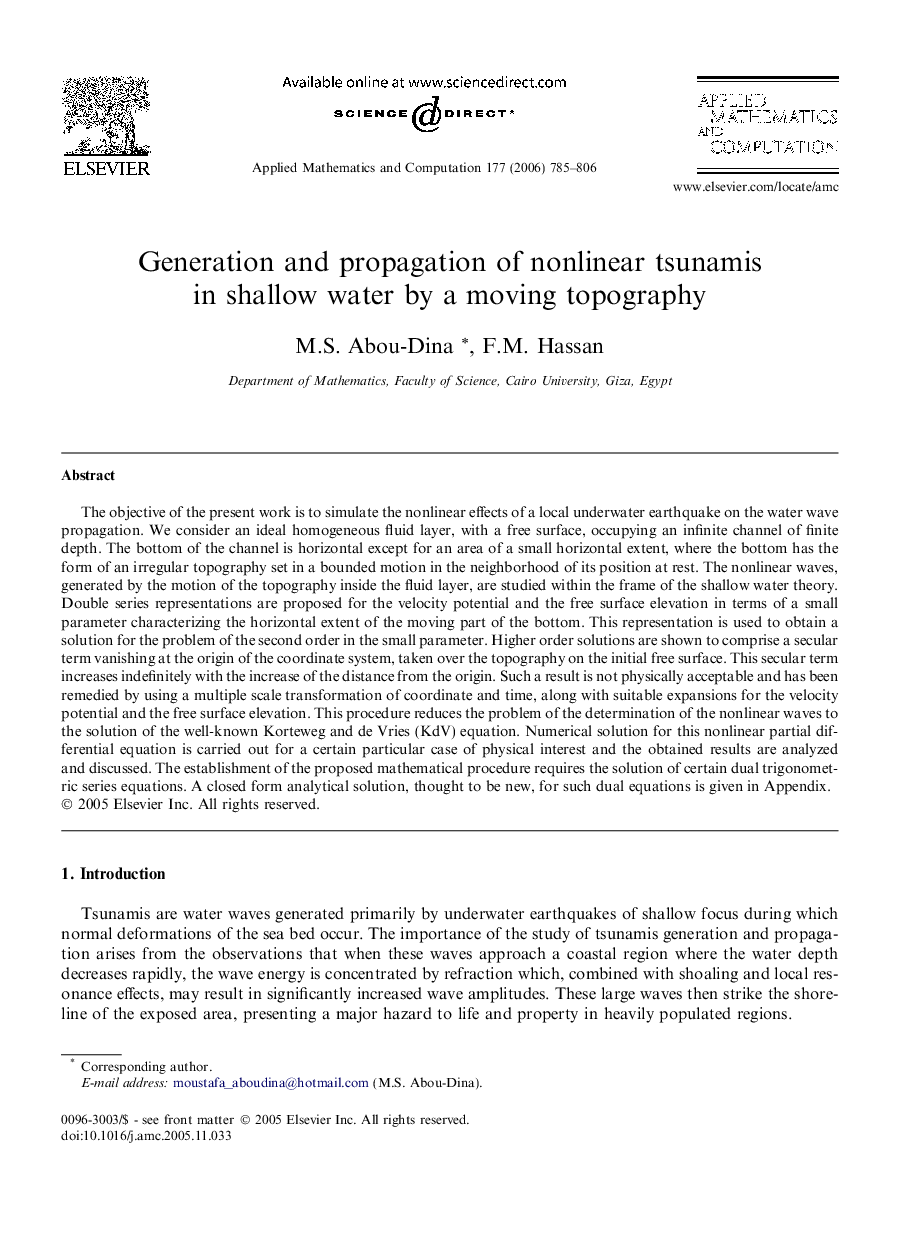| Article ID | Journal | Published Year | Pages | File Type |
|---|---|---|---|---|
| 4637012 | Applied Mathematics and Computation | 2006 | 22 Pages |
Abstract
The objective of the present work is to simulate the nonlinear effects of a local underwater earthquake on the water wave propagation. We consider an ideal homogeneous fluid layer, with a free surface, occupying an infinite channel of finite depth. The bottom of the channel is horizontal except for an area of a small horizontal extent, where the bottom has the form of an irregular topography set in a bounded motion in the neighborhood of its position at rest. The nonlinear waves, generated by the motion of the topography inside the fluid layer, are studied within the frame of the shallow water theory. Double series representations are proposed for the velocity potential and the free surface elevation in terms of a small parameter characterizing the horizontal extent of the moving part of the bottom. This representation is used to obtain a solution for the problem of the second order in the small parameter. Higher order solutions are shown to comprise a secular term vanishing at the origin of the coordinate system, taken over the topography on the initial free surface. This secular term increases indefinitely with the increase of the distance from the origin. Such a result is not physically acceptable and has been remedied by using a multiple scale transformation of coordinate and time, along with suitable expansions for the velocity potential and the free surface elevation. This procedure reduces the problem of the determination of the nonlinear waves to the solution of the well-known Korteweg and de Vries (KdV) equation. Numerical solution for this nonlinear partial differential equation is carried out for a certain particular case of physical interest and the obtained results are analyzed and discussed. The establishment of the proposed mathematical procedure requires the solution of certain dual trigonometric series equations. A closed form analytical solution, thought to be new, for such dual equations is given in Appendix.
Related Topics
Physical Sciences and Engineering
Mathematics
Applied Mathematics
Authors
M.S. Abou-Dina, F.M. Hassan,
